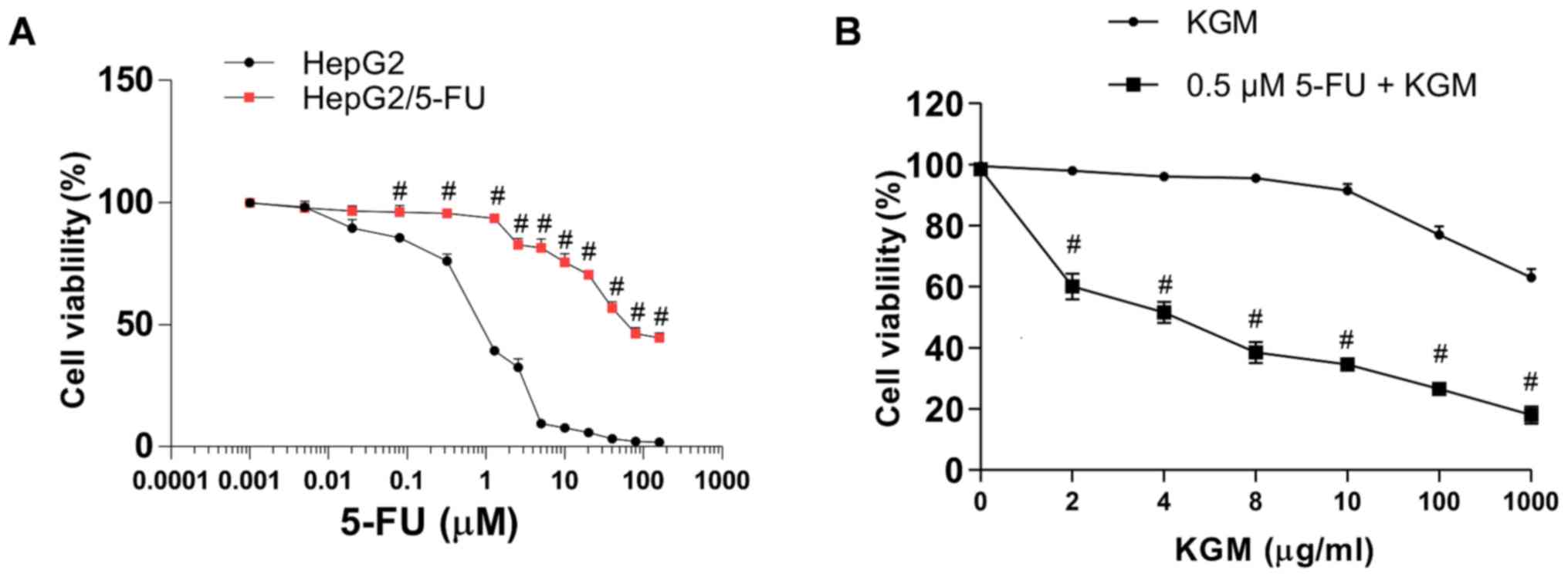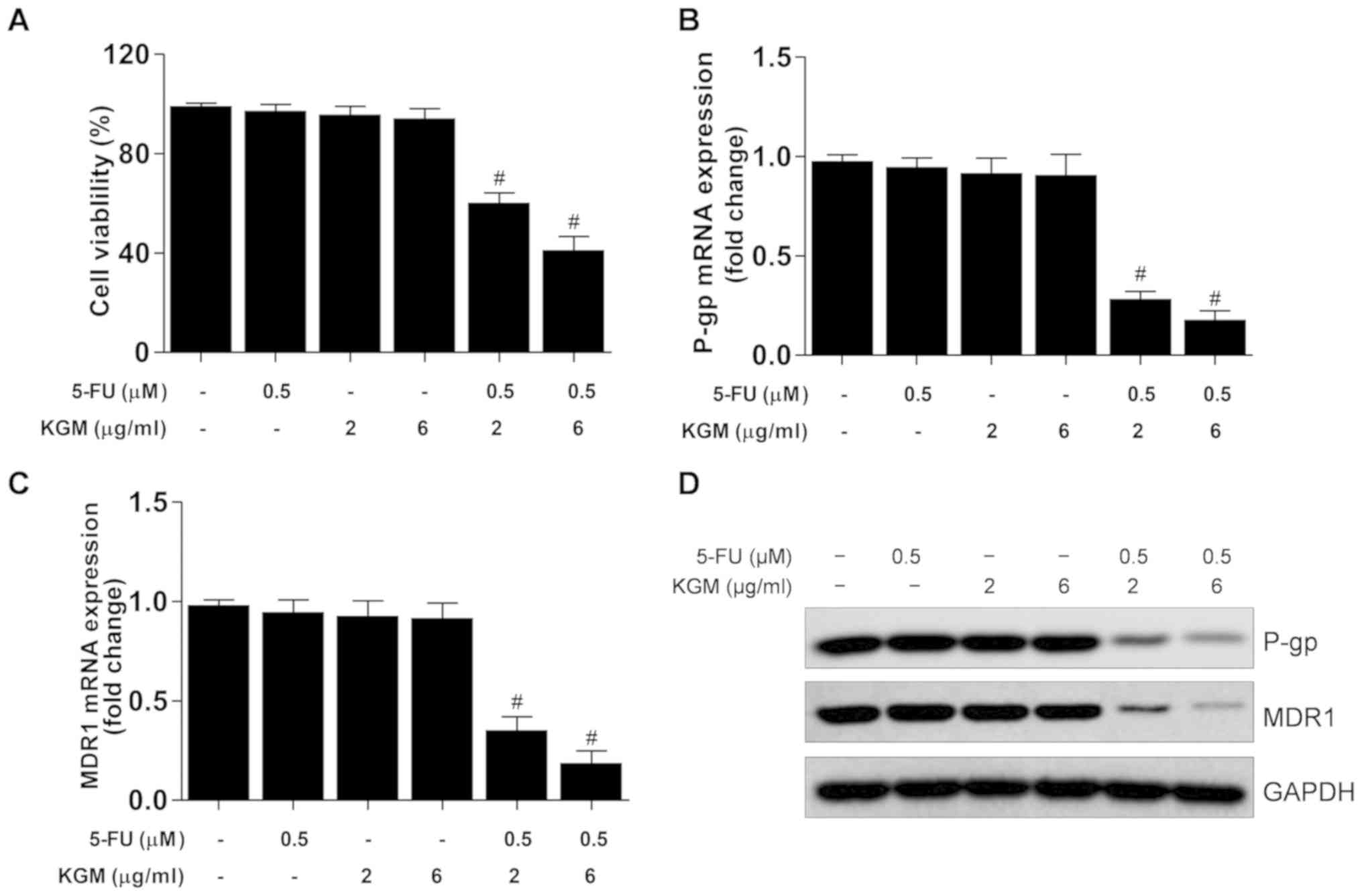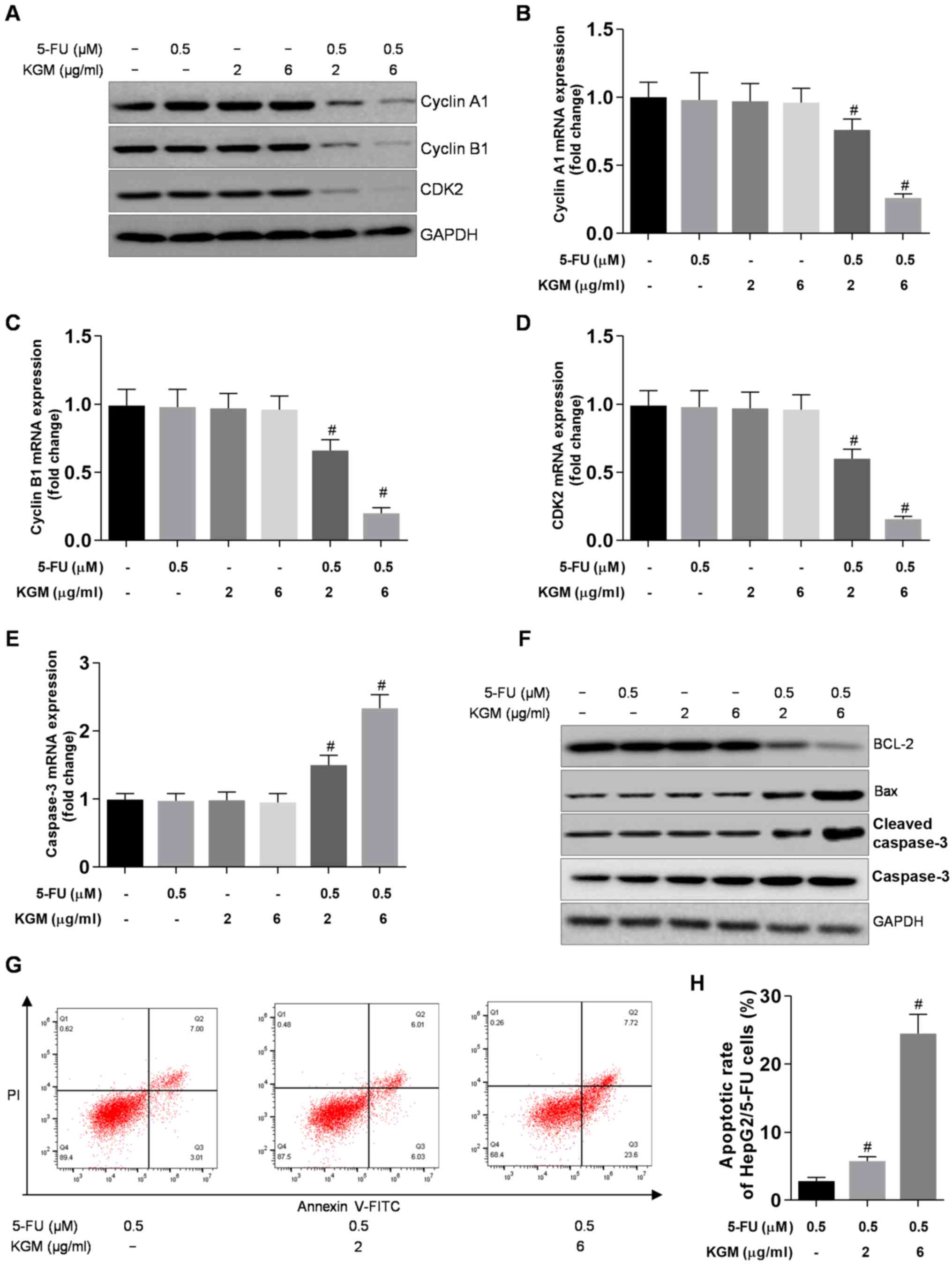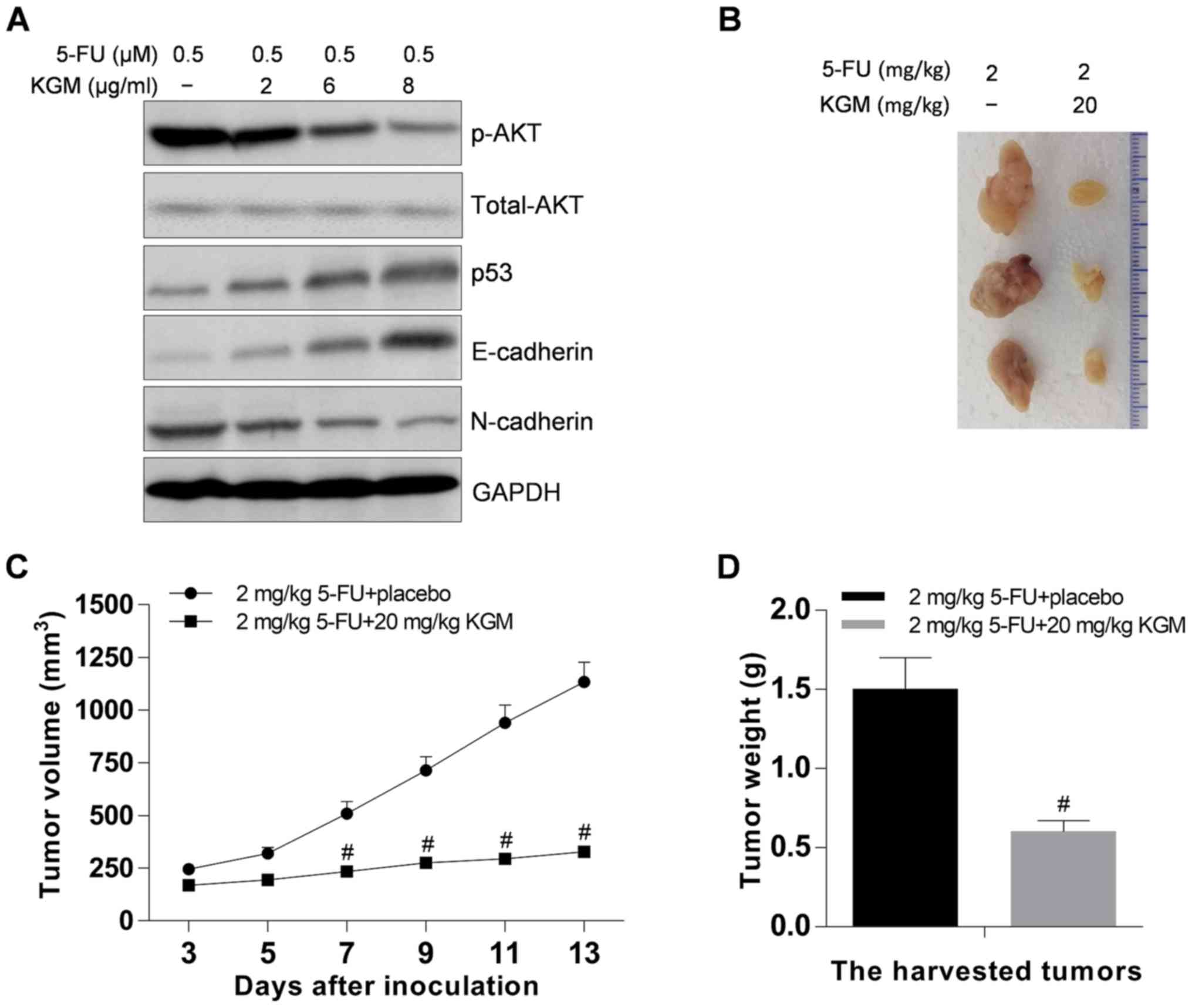|
1
|
Finn RS, Zhu AX, Farah W, Almasri J, Zaiem
F, Prokop LJ, Murad MH and Mohammed K: Therapies for advanced stage
hepatocellular carcinoma with macrovascular invasion or metastatic
disease: A systematic review and meta-analysis. Hepatology.
67:422–435. 2018. View Article : Google Scholar : PubMed/NCBI
|
|
2
|
Singh AK, Kumar R and Pandey AK:
Hepatocellular Carcinoma: Causes, Mechanism of Progression and
Biomarkers. Curr Chem Genomics Transl Med. 12:9–26. 2018.
View Article : Google Scholar : PubMed/NCBI
|
|
3
|
Wang Y, Luo Q, Li Y, Deng S, Li X and Wei
S: A systematic assessment of the quality of systematic
reviews/meta-analyses in radiofrequency ablation versus hepatic
resection for small hepatocellular carcinoma. J Evid Based Med.
7:103–120. 2014. View Article : Google Scholar : PubMed/NCBI
|
|
4
|
Hirashima Y and Shirao K: Predicting drug
efficacy-fluorinated pyrimidines (fluorouracil, S-1 and
capecitabine)]. Gan To Kagaku Ryoho. 39:1603–1607. 2012.(In
Japanese). PubMed/NCBI
|
|
5
|
Udali S, Guarini P, Moruzzi S, Ruzzenente
A, Tammen SA, Guglielmi A, Conci S, Pattini P, Olivieri O,
Corrocher R, et al: Global DNA methylation and hydroxymethylation
differ in hepatocellular carcinoma and cholangiocarcinoma and
relate to survival rate. Hepatology. 62:496–504. 2015. View Article : Google Scholar : PubMed/NCBI
|
|
6
|
Chau I and Cunningham D: Chemotherapy in
colorectal cancer: New options and new challenges. Br Med Bull.
64:159–180. 2002. View Article : Google Scholar : PubMed/NCBI
|
|
7
|
Li J, Duan B, Guo Y, Zhou R, Sun J, Bie B,
Yang S, Huang C, Yang J and Li Z: Baicalein sensitizes
hepatocellular carcinoma cells to 5-FU and Epirubicin by activating
apoptosis and ameliorating P-glycoprotein activity. Biomed
Pharmacother. 98:806–812. 2018. View Article : Google Scholar : PubMed/NCBI
|
|
8
|
Zhang N, Yin Y, Xu SJ and Chen WS:
5-Fluorouracil: Mechanisms of resistance and reversal strategies.
Molecules. 13:1551–1569. 2008. View Article : Google Scholar : PubMed/NCBI
|
|
9
|
Liu Z, Chen J, Yuan W, Ruan H, Shu Y, Ji
J, Wu L, Tang Q, Zhou Z, Zhang X, et al: Nuclear Factor I/B
Promotes Colorectal Cancer Cell Proliferation,
Epithelial-Mesenchymal Transition and 5-fluorouracil Resistance.
Cancer Sci. 110:86–98. 2019.PubMed/NCBI
|
|
10
|
Koretz RL: Adjuvant chemotherapy increased
survival in colorectal cancer patients with low recurrence risk.
Annals of Internal Medicine. 148:JC3–6. 2008. View Article : Google Scholar
|
|
11
|
Saltz LB, Clarke S, Díaz-Rubio E,
Scheithauer W, Figer A, Wong R, Koski S, Lichinitser M, Yang TS,
Rivera F, et al: Bevacizumab in combination with oxaliplatin-based
chemotherapy as first-line therapy in metastatic colorectal cancer:
A randomized phase III study. J Clin Oncol. 26:2013–2019. 2008.
View Article : Google Scholar : PubMed/NCBI
|
|
12
|
Qurishi Y, Hamid A, Majeed R, Hussain A,
Qazi AK, Ahmed M, Zargar MA, Singh SK and Saxena AK: Interaction of
natural products with cell survival and signaling pathways in the
biochemical elucidation of drug targets in cancer. Future Oncol.
7:1007–1021. 2011. View Article : Google Scholar : PubMed/NCBI
|
|
13
|
Tester RF and Al-Ghazzewi FH: Beneficial
health characteristics of native and hydrolysed konjac
(Amorphophallus konjac) glucomannan. J Sci Food Agric.
96:3283–3291. 2016. View Article : Google Scholar : PubMed/NCBI
|
|
14
|
Chua M, Baldwin TC, Hocking TJ and Chan K:
Traditional uses and potential health benefits of Amorphophallus
konjac K. Koch ex N.E.Br. J Ethnopharmacol. 128:268–278. 2010.
View Article : Google Scholar : PubMed/NCBI
|
|
15
|
Behera SS and Ray RC: Konjac glucomannan,
a promising polysaccharide of Amorphophallus konjac K. Koch
in health care. Int J Biol Macromol. 92:942–956. 2016. View Article : Google Scholar : PubMed/NCBI
|
|
16
|
Vuksan V, Jenkins DJ, Spadafora P,
Sievenpiper JL, Owen R, Vidgen E, Brighenti F, Josse R, Leiter LA
and Bruce-Thompson C: Konjac-mannan (glucomannan) improves glycemia
and other associated risk factors for coronary heart disease in
type 2 diabetes. A randomized controlled metabolic trial. Diabetes
Care. 22:913–919. 1999. View Article : Google Scholar : PubMed/NCBI
|
|
17
|
Zhai X, Lin D, Zhao Y, Li W and Yang X:
Enhanced anti-obesity effects of bacterial cellulose combined with
konjac glucomannan in high-fat diet-fed C57BL/6J mice. Food Funct.
9:5260–5272. 2018. View Article : Google Scholar : PubMed/NCBI
|
|
18
|
Wu WT and Chen HL: Effects of konjac
glucomannan on putative risk factors for colon carcinogenesis in
rats fed a high-fat diet. J Agric Food Chem. 59:989–994. 2011.
View Article : Google Scholar : PubMed/NCBI
|
|
19
|
Villaverde AF, Benlloch S, Berenguer M,
Miguel Rayón J, Pina R and Berenguer J: Acute hepatitis of
cholestatic type possibly associated with the use of glucomannan
(Amorphophalus konjac). J Hepatol. 41:1061–1062. 2004.
View Article : Google Scholar : PubMed/NCBI
|
|
20
|
Sawai S, Mohktar MS, Safwani WKZW and
Ramasamy TS: Suppression of the Viability and Proliferation of
HepG2 Hepatocellular Carcinoma Cell Line by Konjac Glucomannan.
Anticancer Agents Med Chem. 18:1258–1266. 2018. View Article : Google Scholar : PubMed/NCBI
|
|
21
|
Rajeevan MS, Ranamukhaarachchi DG, Vernon
SD and Unger ER: Use of real-time quantitative PCR to validate the
results of cDNA array and differential display PCR technologies.
Methods. 25:443–451. 2001. View Article : Google Scholar : PubMed/NCBI
|
|
22
|
Fiebig HH, Berger DP, Winterhalter BR and
Plowman J: In vitro and in vivo evaluation of US-NCI compounds in
human tumor xenografts. Cancer Treat Rev. 17:109–117. 1990.
View Article : Google Scholar : PubMed/NCBI
|
|
23
|
Longley DB, Harkin DP and Johnston PG:
5-fluorouracil: Mechanisms of action and clinical strategies. Nat
Rev Cancer. 3:330–338. 2003. View
Article : Google Scholar : PubMed/NCBI
|
|
24
|
Sasada S, Miyata Y, Tsutani Y, Tsuyama N,
Masujima T, Hihara J and Okada M: Metabolomic analysis of dynamic
response and drug resistance of gastric cancer cells to
5-fluorouracil. Oncol Rep. 29:925–931. 2013. View Article : Google Scholar : PubMed/NCBI
|
|
25
|
Yang HY, Zhao L, Yang Z, Zhao Q, Qiang L,
Ha J, Li ZY, You QD and Guo QL: Oroxylin A reverses multi-drug
resistance of human hepatoma BEL7402/5-FU cells via downregulation
of P-glycoprotein expression by inhibiting NF-κB signaling pathway.
Mol Carcinog. 51:185–195. 2012. View
Article : Google Scholar : PubMed/NCBI
|
|
26
|
Martini M, De Santis MC, Braccini L,
Gulluni F and Hirsch E: PI3K/AKT signaling pathway and cancer: An
updated review. Ann Med. 46:372–383. 2014. View Article : Google Scholar : PubMed/NCBI
|
|
27
|
Zhang ZD, Li Y, Fan Q, Zhao B, Tan B and
Zhao XF: Annexin A2 is implicated in multi-drug-resistance in
gastric cancer through p38MAPK and AKT pathway. Neoplasma.
61:627–637. 2014. View Article : Google Scholar : PubMed/NCBI
|
|
28
|
Chen JR, Jia XH, Wang H, Yi YJ, Wang JY
and Li YJ: Timosaponin A-III reverses multi-drug resistance in
human chronic myelogenous leukemia K562/ADM cells via
downregulation of MDR1 and MRP1 expression by inhibiting PI3K/Akt
signaling pathway. Int J Oncol. 48:2063–2070. 2016. View Article : Google Scholar : PubMed/NCBI
|
|
29
|
Dong J, Zhai B, Sun W, Hu F, Cheng H and
Xu J: Activation of phosphatidylinositol 3-kinase/AKT/snail
signaling pathway contributes to epithelial-mesenchymal
transition-induced multi-drug resistance to sorafenib in
hepatocellular carcinoma cells. PLoS One. 12:e01850882017.
View Article : Google Scholar : PubMed/NCBI
|
|
30
|
Kim EJ, Kang GJ, Kang JI, Boo HJ, Hyun JW,
Koh YS, Chang WY, Kim YR, Kwon JM, Maeng YH, et al: Over-activation
of AKT signaling leading to 5-Fluorouracil resistance in
SNU-C5/5-FU cells. Oncotarget. 9:19911–19928. 2018. View Article : Google Scholar : PubMed/NCBI
|
|
31
|
Do TV, Kubba LA, Antenos M, Rademaker AW,
Sturgis CD and Woodruff TK: The role of activin A and Akt/GSK
signaling in ovarian tumor biology. Endocrinology. 149:3809–3816.
2008. View Article : Google Scholar : PubMed/NCBI
|
|
32
|
Zhou Q, Yan B, Hu X, Li XB, Zhang J and
Fang J: Luteolin inhibits invasion of prostate cancer PC3 cells
through E-cadherin. Mol Cancer Ther. 8:1684–1691. 2009. View Article : Google Scholar : PubMed/NCBI
|
|
33
|
He L, Zhu H, Zhou S, Wu T, Wu H, Yang H,
Mao H, SekharKathera C, Janardhan A, Edick AM, et al: Wnt pathway
is involved in 5-FU drug resistance of colorectal cancer cells. Exp
Mol Med. 50:1012018. View Article : Google Scholar : PubMed/NCBI
|
|
34
|
Sui X, Kong N, Wang X, Fang Y, Hu X, Xu Y,
Chen W, Wang K, Li D, Jin W, et al: JNK confers 5-fluorouracil
resistance in p53-deficient and mutant p53-expressing colon cancer
cells by inducing survival autophagy. Sci Rep. 4:46942014.
View Article : Google Scholar : PubMed/NCBI
|


















